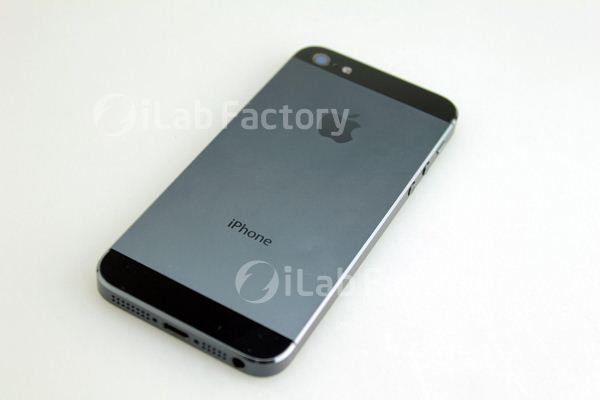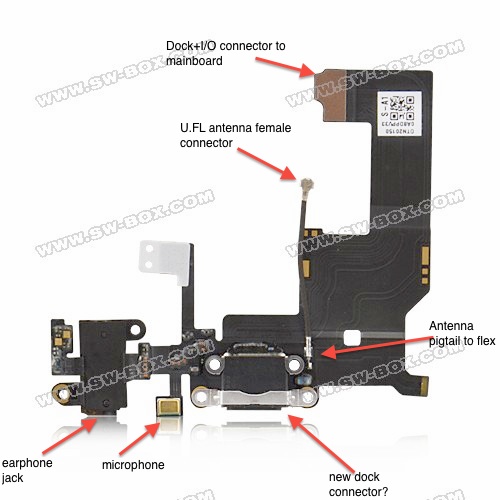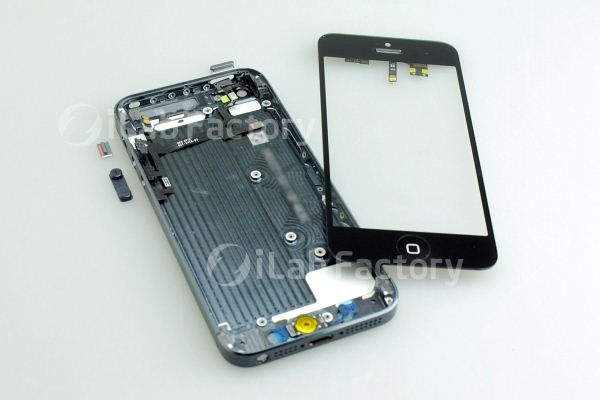Preparing for the iPhone Next: Rumors Analyzed
by Brian Klug & Anand Lal Shimpi on August 27, 2012 9:40 PM EST- Posted in
- Smartphones
- Apple
- Mobile
- iPhone
While we typically don't comment on rumors we don't know to be true at AnandTech, we often get requests to help set rational expectations ahead of major iDevice launches. The shroud of secrecy around major Apple launches can pave the way for both sensible and unrealistic conclusions.
Given the growth of Apple's iPhone/iPad devices, it has become increasingly difficult for suppliers in the chain to remain mum about any changes. Similar to how we often get early access to CPUs, motherboards and other components out of Taiwan, it has become increasingly commonplace to see leaks of iDevice components out of the big ODMs in China.
Apple is largely expected to launch its sixth iPhone next month. The historical cadence of design, SoC, and cellular changes are in the table below:
| Apple iPhone - Historical Trends | |||||||
| Release Year | Industrial Design | CPU Architecture | GPU Architecture | Cellular Architecture | |||
| iPhone | 2007 | 1st gen | ARM11 | MBX-lite | Infineon S-Gold 2 | ||
| iPhone 3G | 2008 | 2nd gen | ARM11 | MBX-lite | Infineon X-Gold 608 | ||
| iPhone 3GS | 2009 | 2nd gen | Cortex A8 | SGX-535 | Infineon X-Gold 608 | ||
| iPhone 4 | 2010 | 3rd gen | Cortex A8 | SGX-535 | Infineon X-Gold 618 in 4 GSM / Qualcomm MDM6600 in 4 CDMA | ||
| iPhone 4S | 2011 | 3rd gen | 2 x Cortex A9 | SGX-543MP2 | Qualcomm MDM6610 (MDM6600 w/ ext. trans) | ||
| iPhone Next | 2012 | ? | ? | ? | ? | ||
Trends are pretty easy to spot in the table. With the exception of the first iPhone, the industrial design appears to be on a 2-year cadence. The CPU and GPU architectures are also on the same 2-year cadence. From a silicon standpoint even the cellular architecture is trending towards the same 2-year cadence, with a few notable exceptions (e.g. GSM/CDMA iPhone 4 divide).
Based on historical trends alone it's pretty easy to conclude that we'll see a 4th generation chassis, a pair of ARM Cortex A9s and a PowerVR SGX 543MP2 under the hood. Add the assumption of LTE (a reasonable one to make) and you have a pretty believable story. It turns out the currently available evidence helps corroborate this, but let's dig through what's out there to see how this all fits.
Chassis & Display
The chassis is largely a known quantity by this point. Enough examples out of China have surfaced to support the current working theory of a 4-inch diagonal (16:9) display in a slightly taller chassis with roughly the same width. Put simply, it's a new taller aspect ratio, which also has the consequence of including a larger 4-inch, 640 x 1136 display. The result is a change only in one dimension for developers to worry about.
The other big rumored change is a move from on-cell touch sensing (which places the drive and detect ITO layers above the LCD assembly) to an in-cell touch solution. In-cell being the operative word because the drive layers are integrated into the LCD gating (or use it natively), or on the color filter layer. There's some debate about what counts as on-cell and in-cell that isn't quite settled, but ultimately what it boils down to is a thinner display stack that will contribute significantly to the reduction in overall device thickness that is rumored for the upcoming iPhone.
While the industrial design remains quite similar at a high level, there do appear to be some major changes. Where the 4 and 4S designs used front and back glass with an external metal band for support, the leaked designs out of China feature a metal unibody construction with cutouts for RF windows at top and bottom. There's enough evidence of this from the CNC machine marks visible on examples, and moreover moving to a larger form factor requires a beefier chassis.

Black regions at top and bottom are likely RF window cutouts
With top and bottom RF windows (which appear to be glass) there shouldn't be any implications on antenna performance for cellular. If you followed our coverage of the evolution of Apple's cellular antenna design from the iPhone 4 GSM, to 4 CDMA, to 4S, you'll notice that this is a clear next step, largely inheriting the top/bottom antenna split from the 4S which fully mitigated deathgrip. Interestingly enough the exterior band appears to have a different chrome finish rather than the matte stainless steel of previous designs.

Bottom flex cable, annotations ours
Other things like moving the 3.5mm headphone jack to the bottom of the device and the mini 9-pin dock connector are fairly well corroborated by leaks with components that all fit together inside the case. Interestingly enough, parts indicating the mini dock connector and relocated headphone jack have been circulating for nearly 4 months.











131 Comments
View All Comments
Samus - Wednesday, August 29, 2012 - link
This phone is going to be substantially inferior to the Galaxy S III and the HTX One, and not to pour salt on the soon to be open wound, but Apple is going to depend on this outdated device to be their flagship for the next 10-12 months. Samsung will have at least one, if not TWO, next generation Galaxy devices released by then.No wonder they're suing them out of business. Apple is clearly scared of fair competition, because they can't win.
michael2k - Wednesday, August 29, 2012 - link
When has copying been called fair competition?Anandtech's preview clearly says that the S3's performance increase is due to the bump in clock and improved software stack, both of which also apply to the iPhone Next.
doobydoo - Wednesday, August 29, 2012 - link
How can you say this phone is going to be substantially inferior to the SG3 when the 10 month old iPhone 4S has a superior GPU to the American SG3, released recently?It also has better battery life, along with the rest of benefits it gets via iOS and Apple's app store.
utsava - Wednesday, August 29, 2012 - link
As if hardware specs are the only thing that makes a smartphone great. Go try the quad-core 2GB RAM Galaxy Note 10.1 and let me know how fast it is to use.solinear - Tuesday, August 28, 2012 - link
Like how they destroyed Microsoft, right?I give them 5 years before they fall apart. It's like Steve knew they were screwed, so he built up a new business plan called "Sue everyone over and over and over and over and over until the name Apple is equated with the RIAA"
FalcomPSX - Tuesday, August 28, 2012 - link
The difference between Apple and the RIAA though is that RIAA sues teenagers and grandmothers. Apple sues large corporations, not their own customer base. I dont like Apple's tactics either, but they are no where near as bad as the RIAA.A5 - Monday, August 27, 2012 - link
This is all pretty much in line with what I was thinking.The Amazon and Samsung events the week before will also be interesting, then I guess there's the iPad Mini rumors for October - after that I guess we'll be waiting for the crazy CES stuff!
faizoff - Monday, August 27, 2012 - link
Definitely the best speculation article I've read so far.Dug - Monday, August 27, 2012 - link
Agree. Finally an educated look at what can happen.Dekker - Tuesday, August 28, 2012 - link
Agree.